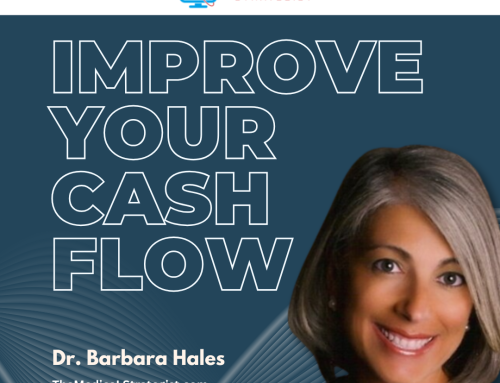Podcast: Play in new window | Download
Subscribe: RSS
In this episode, Dr. Barbara Hales explores how video marketing can transform patient trust and engagement in medical practices.
• The Power of Video – People retain 95% of a message through video compared to just 10% from text. Video builds trust by showing authenticity, emotions, and personal connections.
• Types of Effective Videos
●Welcome Videos – A short introduction featuring the doctor and staff, creating a warm and inviting first impression.
●FAQ Videos – Address common patient concerns, such as procedure expectations or office visits, reducing anxiety and uncertainty.
●Behind-the-scenes – A walkthrough of the clinic and staff to make patients feel more comfortable before their visit.
●Patient Testimonials – Real stories from patients build credibility and trust.
●Educational Videos – Explaining conditions, treatments, or lab results enhances patient understanding and confidence.
• Real Success Stories –
●A pediatrician’s 90-second welcome video reassured a new mother at 2 AM, leading to an immediate appointment.
●A dermatologist gained 12 new bookings in two days from a simple, unscripted Q&A video about sunscreen.
●A surgeon’s FAQ video on hernia surgery convinced a hesitant veteran to book his procedure after years of delay.
• Where to Share Videos – Website homepage, Google Business Profile, social media platforms (Instagram, Facebook, TikTok), patient portals, and email newsletters.
• Overcoming Camera Shyness – Start simple, use a smartphone, and be yourself. If necessary, opt for voiceovers or animations, but authenticity matters most.
Key Takeaway:
“Video isn’t about perfection—it’s about connection. Patients choose doctors they trust, and video helps you build that trust before they even step into your office.” – Dr. Barbara Hales.
Connect with Barbara Hales:
Twitter: @DrBarbaraHales
Facebook: facebook.com/theMedicalStrategist
Business Website: www.TheMedicalStrategist.com
Show website: www.MarketingTipsForDoctors.com
Email: Barbara@TheMedicalStrategist.com
Books:
●Content Copy Made Easy
●14 Tactics to Triple Sales
●Power to the Patient: The Medical Strategist
YouTube: TheMedicalStrategist
LinkedIn: www.linkedin.com/in/barbarahales
TRANSCRIPTION (194)
Introduction
Dr. Barbara Hales: Welcome to Marketing Tips for Doctors, the show where we uncover the best strategies to elevate your private medical practice. I’m your host, Dr. Barbara Hales, and today, we’re diving into an exciting topic—how video builds trust in your medical practice.
Gone are the days when text alone was enough to engage patients. Studies show that people retain 95% of a message through video, compared to just 10% from text. Video helps build trust by showcasing authenticity, emotions, and personal connections.
Why Video is a Game-Changer for Doctors
Dr. Barbara Hales: Video content allows doctors to engage with patients before they even step into the office. Unlike written content, video creates an emotional connection, making patients feel more comfortable and confident in their healthcare decisions.
Patients want to see your face, hear your voice, and get a sense of your personality. This helps reduce fear and anxiety, leading to stronger patient relationships and higher retention rates.
Types of Effective Videos for Medical Practices
Dr. Barbara Hales: If you’re wondering what types of videos work best for a medical practice, here are some key examples:
●Welcome Videos: A short introduction featuring the doctor and staff, creating a warm and inviting first impression.
●FAQ Videos: Addressing common patient concerns, such as procedure expectations or office visits, to reduce anxiety and uncertainty.
●Behind-the-scenes Footage: A walkthrough of the clinic and staff, making patients feel more at ease before their visit.
●Patient Testimonials: Real stories from patients build credibility and trust.
●Educational Videos: Explaining conditions, treatments, or lab results simply to enhance patient understanding and confidence.
Real Success Stories of Video in Healthcare
Dr. Barbara Hales: Let’s look at some real-life examples of how video has impacted medical practices:
●A pediatrician’s 90-second welcome video reassured a new mother at 2 AM, leading to an immediate appointment.
●A dermatologist gained 12 new bookings in two days from a simple, unscripted Q&A video about sunscreen.
●A surgeon’s FAQ video on hernia surgery convinced a hesitant veteran to book his procedure after years of delay.
Where to Share Videos for Maximum Impact
Dr. Barbara Hales: Once you’ve created a video, it’s important to share it where it will have the most impact. Consider posting on:
●Your website homepage
●Google Business Profile
●Social media platforms (Instagram, Facebook, TikTok)
●Patient portals
●Email newsletters
By distributing your videos across multiple channels, you increase visibility and engagement.
Overcoming Camera Shyness
Dr. Barbara Hales: Many doctors hesitate to create videos because they feel uncomfortable on camera. Here’s how to overcome that fear:
●Start simple—use a smartphone rather than high-end equipment.
●Be yourself—patients connect with authenticity, not perfection.
●If necessary, opt for voiceovers or animations instead of appearing on camera.
The key is to focus on delivering value rather than worrying about looking flawless.
Key Takeaway
Dr. Barbara Hales: “Video isn’t about perfection—it’s about connection. Patients choose doctors they trust, and video helps build that trust before they even step into your office.”
Connect with Dr. Barbara Hales
Dr. Barbara Hales: If you want to learn more about using video to grow your practice, connect with me here:
Website: www.medicalstrategist.com
Contact: www.medicalstrategist.com/contact



